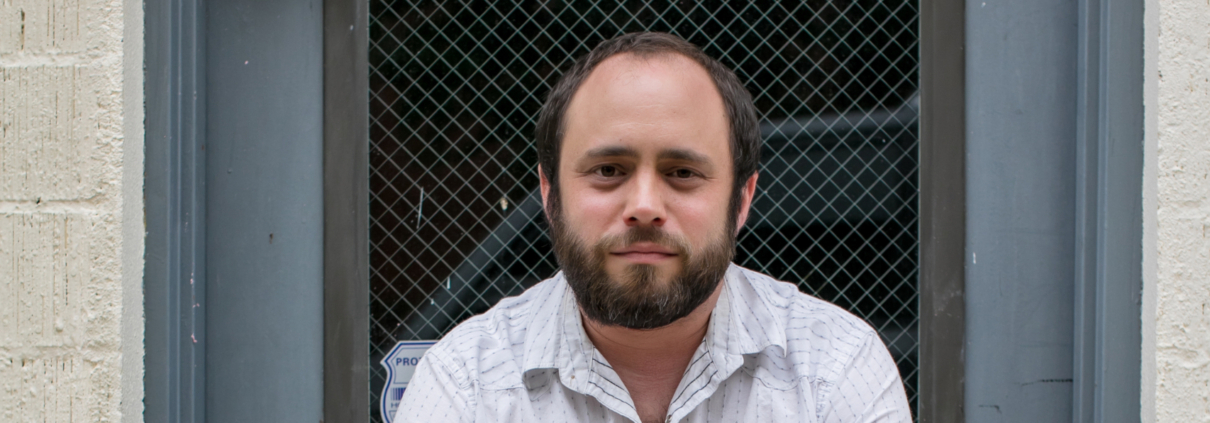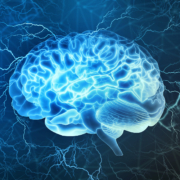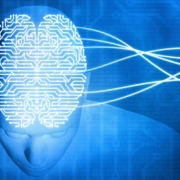What happens when you treat depression with ketamine
It was a Wednesday afternoon. March 27, 2019. The out-of-office notification popped up on the team calendar at my corporate job. I told everyone I had a “doctor’s appointment” – technically accurate, yet spiritually a lie. I wasn’t going to the doctor’s; I was going to space.
Okay, not actual space–a ketamine clinic just a block or so away from the University of Texas at Austin. I answered a few clipboards full of questions. They sat me in a chair, read my blood pressure, and asked me “What is your intention for today’s infusion?” I do not recall my answer.
Then the infusionist hooked me up to an EKG and poked a vein. The machine beeped and the bag began to drip. The next hour was the weirdest of my entire life–I was about to go into a K-hole to treat a depression I’d been battling for years.
Why I chose ketamine
I received my first official diagnosis of major depressive disorder in the spring of 2001. I was a freshman at Syracuse University, struggling with being a working-class kid from the Rust Belt at a prestigious private school that was a popular magnet for the types of kids we’d call “nepo-babies” in today’s parlance. I was not taking great care of myself. I exercised but forgot to eat. I made friends but not as quickly as I lost them. Occasionally, I even went to class. I got good grades but felt like a misfit.
For treatment, I tried Zoloft. I saw a social worker for counseling. I can’t say either worked. This began a years-long journey on therapists’ couches and doctors’ pills, trying to understand why I felt so sad, anxious, and broken – and, hopefully, feel better. My mental health waxed and waned, but in late 2018 I was low enough (and well-off enough) to try new alternatives.
When my counselor first suggested ketamine infusion therapy after my latest 90-day course of Lexapro yielded unremarkable results, I recoiled. I was never a fan of “drugs.” Too scary. Too much can go wrong. I saw kids put powdered ketamine up their noses in college, sink back in their chairs, and fall out of touch with reality. I thought to myself, “That looks like no fun at all and I’m never going to do that.”
Never say never, I guess. My counselor assured me I would be safe. “I can refer you. I’m good friends with the woman who runs the clinic and her husband’s the doctor there. They’ll take good care of you.” Eventually, I acquiesced. Weeks later, there I was in the chair: determined and pot-committed. I paid $500 to be there (and $3,000 for the initial course of treatment) and put my faith in this Y2K-era club drug. I had some good research on my side.
How ketamine works
Developed in 1962 as a dissociative anesthetic, chemists created the novel compound to be a safer and less hallucinogenic alternative to phencyclidine (PCP). At anesthetic doses, ketamine provides pain relief, sedation, and amnesia. Breathing function is preserved, your blood pressure rises, and your pulse ticks upward. It’s short-acting and quickly metabolized, providing relief within seconds and acute effects that last for an hour or less. It’s antidepressant potential was first noted in 1975.
Unlike conventional antidepressants, which target monoamines, ketamine acts upon the glutamate system of the brain as an N-methyl-d-aspartate (NMDA) receptor antagonist, mediating activity of GABA and glutamate neurotransmitters. Glutamate plays an important role in modulating responsive synaptic changes related to experiences associated with learning and memory.
If how ketamine works is unusual, how fast ketamine works is genuinely unprecedented. Recipients notice an improvement in mood within hours–improvements that can last over a week on their own and, when coupled with integrative therapies and proper care pre- and post-infusion, can last for months if not years.
Researchers at the University of British Columbia conclude, “[Ketamine’s] effects may ‘reset the system’ by counteracting the synaptic deficits, neuronal atrophy, and loss of connectivity in depression.” If you think of the brain as a computer–ketamine appears to perform a soft reboot, a quick start, a system restore, a hard-drive cleanup, and defragmentation all in one.
Ketamine’s ace in the hole is the way it appears to actually “rewire the brain” by increasing neuroplasticity. The brain can heal itself more easily by allowing new neural pathways to develop. Theodora Blanchfield, AMFT, a Los Angeles-based ketamine therapist posits that “the new neural pathways—think of them as new roads in your brain—allow you to create more positive thoughts and, therefore, behaviors. This is compared to traditional antidepressants, which only work as long as they are in your system.”
We can even observe this rewiring visually. In 2022, University of Pennsylvania researchers reported that ketamine switches off specific neurons involved in normal awake brain function and switches on an entirely different and previously inactive set of cells – believed to be a network of cells that enable “dreams, hypnosis, or some type of unconscious state”.
In an interview with Harvard Gazette, anesthesia researcher Fangyun Tian, Ph.D., summarized her own research by drilling down even further, reporting “high-frequency gamma oscillations in the prefrontal cortex and the hippocampus known to be involved in ketamine’s antidepressant effects from other studies.” Additionally, the researchers “found a three-hertz oscillation in the posteromedial cortex that another study showed might be related to ketamine’s dissociative effects.”
These gamma oscillations appear to promote the profound changes in cognition and perception that permeate the psychedelic experience–and also appear to aid in shaking the brain out of the “default mode network,” allowing people to more easily experience mental health breakthroughs and behavioral shifts.
Research into the potential applications yields buzzy headlines and buzzier results, suggesting ketamine-powered neuroplasticity improvements can aid in everything from OCD to PTSD to smoking cessation to alcohol use disorder to learning to tolerate tropical house music.
If this all sounds a bit bullish, it doesn’t come without risks or unknowns. While generally (and often exceptionally) safe, especially in short-term clinical settings, adverse side-effects among long-term clinical ketamine recipients include impairments in memory, executive functioning, self-awareness, and increases in emotional blunting and reward processing. Additionally, a 2022 review published in Frontiers in Neuroanatomy proposes that long-term recreational ketamine use was “associated with lower gray matter volume and less white matter integrity, lower functional thalamocortical and corticocortical connectivity.”
How a therapeutic K-Hole actually feels
My ketamine infusion treatment course consisted of six doses over three weeks. I received progressively increasing amounts, starting at 50mg and ending at 200mg. While no two infusions were alike, they were similar enough to be able to speak about them in broad strokes. Each infusion took about an hour. They started slowly, gradually warmed up, peaked, then waxed and waned in their cognitive distortions until the last drop. The emotional whiplash was sudden, frequent, random, and severe. I laughed, cried, and screamed – sometimes all at once. All the while, I felt a warm glow, a genuine sense of awe-struck wonder, and a slight tinge of dread that this could all go very wrong at any given moment.
Immediately after each dose, I journaled my thoughts in an attempt to remember as much of what I had just experienced as I could. I described the infusions as a “solo space flight,” the Antoine de Saint-Exupéry novella “La Petit Prince,” a journey into “the operating system” of reality to modify the UI and UX, “a wafer-thin atmosphere buffering a sort of meta-reality, enveloped by a dark abyss of nothingness, monitored by scientists in lab coats,” the “minus world” video game glitch in the original Super Mario Bros., and “the flume ride in the Mexico installation at Disney’s EPCOT theme park.” By the final infusion, I started coining terms like “soul meridian” and comparing myself to Simba from The Lion King and the Manchurian Candidate.
Other common ketamine experiences for me included: speaking in perfect French with my dead Papa as a young man at a Parisian cafe, faceless people performing heavy industrial work, feeling as though I’m hanging from the ceiling, feeling watched by MK Ultra-era government medical observers, staring in the direction of a precipice that never quite arrives, and a procession of formless deep blues and greens that wash into each other.
One frequent recurring experience was what I call the “coffin moment.” Approximately two-thirds of the way through most of the infusions, the chair in which I was sitting in folded into a coffin that rose from below the floor and onto a stage where people passed and pay respects. Then I levitated and floated toward a bright light on a well-lit path (think: Rainbow Road from Super Mario Kart). My life fast-forwarded like the climax of a montage that ended in silence and white stillness. I walked to a white door. That was when I heard a voice whisper “not yet,” and I dropped back into my body. I didn’t always make it all the way through that progression–sometimes I ended at the rising coffin–but the moment always played out the same: I was dead and I shouldn’t have been. Then the ketamine subsided.
For as insane as “pretend death” sounds, it’s not uncommon in a psychedelic context. In fact, ketamine is so adept at simulating near-death experiences that there’s peer-reviewed literature detailing the phenomenon. People taking clinical doses of ketamine report experiencing these sensations with uncanny levels of accuracy and consistency.
Not all of my ketamine infusions were pleasant; on two occasions out of the roughly 40 (including boosters) I’ve received, my hallucinations were so painful and intense that I had to cut the infusion short. On a handful of other occasions, my blood pressure spiked to levels that caused clinicians to draw the same dosage out over 75 or even 90 minutes instead of 60.
Still, at doses that cause full dissociation–approaching anesthesia–I progressed through states of curiosity, childlike immersion, omniscient appraisal of life and reality, existential dread, death, rebirth, and newfound confidence. Just about always in that order.
How it feels when it works (and when it doesn’t)
In my experience, there’s been no correlation between how an infusion feels and how successful it is. I’ve had profoundly meaningful and pleasant infusions that did next to nothing; I’ve had frightening and elegiac infusions that changed me in lasting ways.
Post-infusion care and integration are every bit as vital to neural rewiring as the ketamine itself.
My gameplan for what I call the “afterburn” (the 24 hours post-infusion) is to drink plenty of water, eat plenty of food, get plenty of sleep, and avoid all of the following: calls, work, driving, decision-making, the news, deep thought, stress, alcohol, and tobacco.
While most infusions register some improvement, a handful have not–usually due to something sabotaging the post-infusion window. Booze. Bad sleep. Dehydration. Stress. The Buffalo Bills losing to the Kansas City Chiefs in the playoffs.
When ketamine works–and I was usually able to tell by day No. 2, if not sooner–it was obvious. I started incorporating healthier habits. I felt myself become kinder and more empathetic, clearer in thought and morality, more courageous and self-assured, more compassionate toward myself, and less reactive to slights or mistakes. I laughed often and more easily.
Most noticeably, I became more curious. Ketamine may not be a wonder drug, per se, but my elementary understanding of neuronal function and limited experience with other psychotropic medication has convinced me to believe that there may be no other substance that sparks wonder so subtly or effectively.
It’s the curiosity and wonder that have led me to believe that this is the “rewiring” in action. I was often reminded of the Overview Effect–a cognitive shift experienced by astronauts upon seeing the Earth in full from space for the first time. When they return from orbit, they report increased feelings of cooperation and collectivism and a kind of self-transcendence. They become more appreciative, empathetic, and kind. They change the way they show up.
So … does it work?
It’s been four years since I first explored ketamine treatment for my depression. Since then, we’ve endured a deadly global pandemic and a distressing decline in our social and political climates. There’s not enough ketamine in the world to cure what ails us collectively. There’s so much of that noise in the data – plus unrelated work, home, and life stressors – that I can’t tell you whether I’m “still depressed” or if the infusions were worth it.
In short, I think it was worth trying, but it also was no magic bullet.
What I can tell you is this: Ketamine made me a marginally better person. Clearer, kinder, more curious, and occasionally happier. At the same time, I recognized that ketamine is just one part of a bigger picture. Improving your mood requires diligent self-care and self-inquiry, the absence of significant personal and systemic challenges, robust relationships with people close to you, and the curiosity and enthusiasm required to keep learning and growing. Ketamine helps facilitate that final piece and only that final piece.
If that feels like an underwhelming appraisal of something that repeatedly simulates near-death experiences for $500 per hour, let me close with this anecdote. In 2019, I collected my ketamine notes into a 10,000-word essay I published on Medium. It became my most popular and critically lauded written work and earned me enough money and professional and public service opportunities – including writing this very article – to radically change my life. It wasn’t the chemical that changed me; it was what I did with the opportunity it granted me that did. I’ve learned, grown, changed, and evolved – maybe that’s all we can do. Maybe that’s the best we can do. I’ll take it.

 Aubre Salas, Gypc Girl Photography https://gypcgirlphotography.com/
Aubre Salas, Gypc Girl Photography https://gypcgirlphotography.com/






